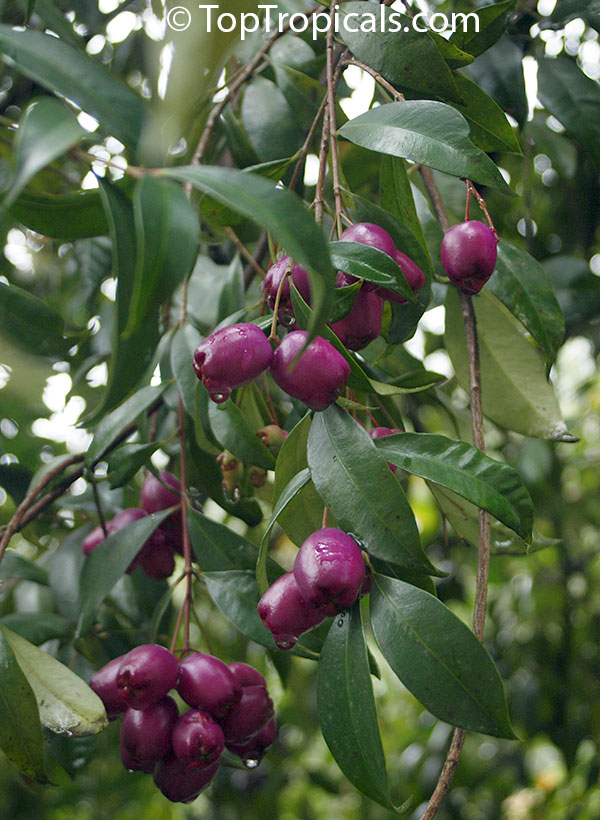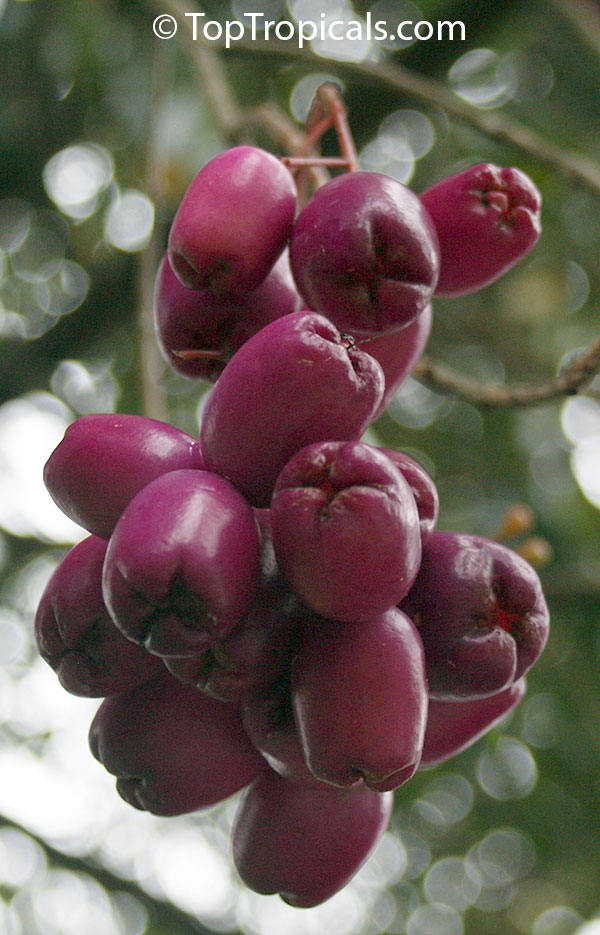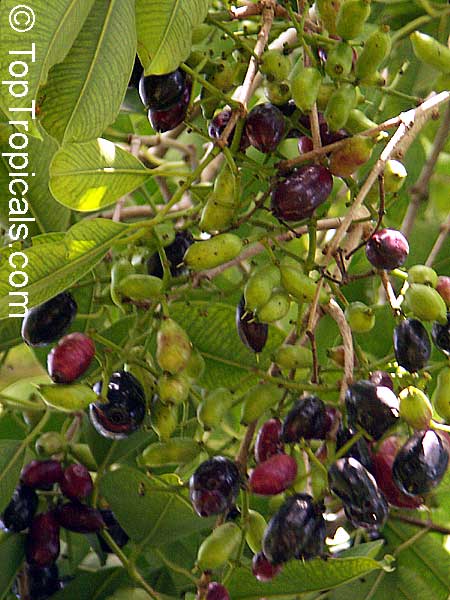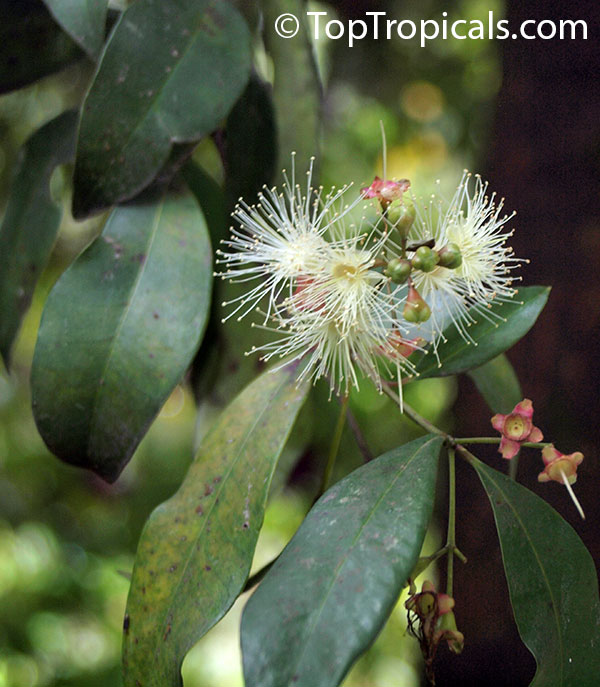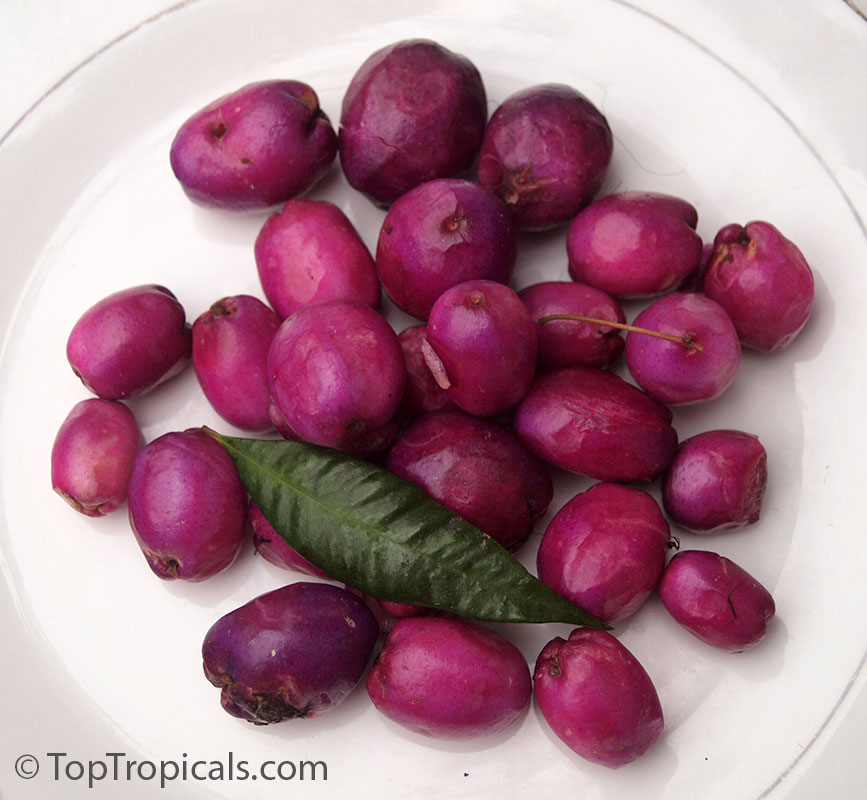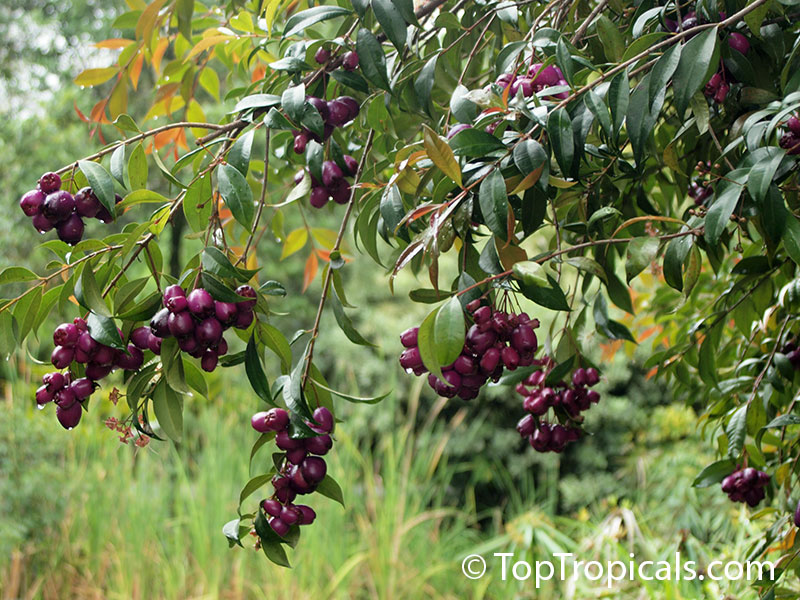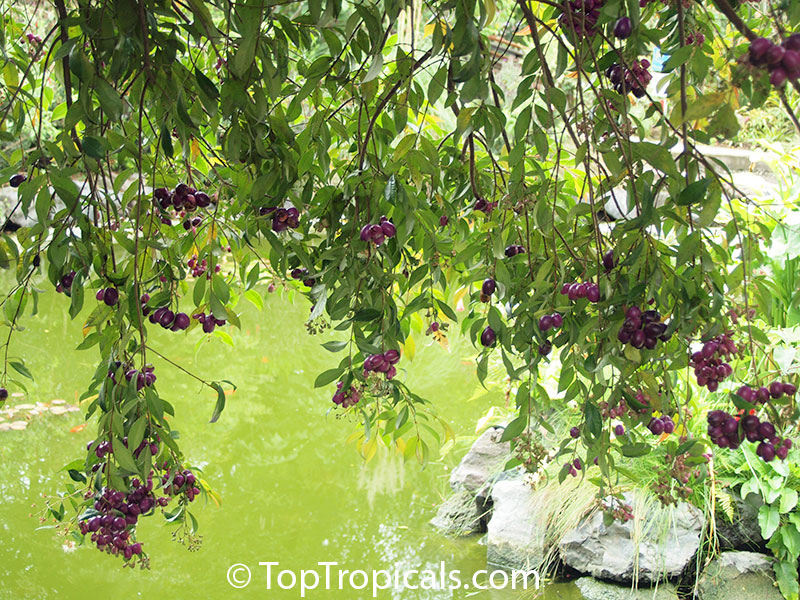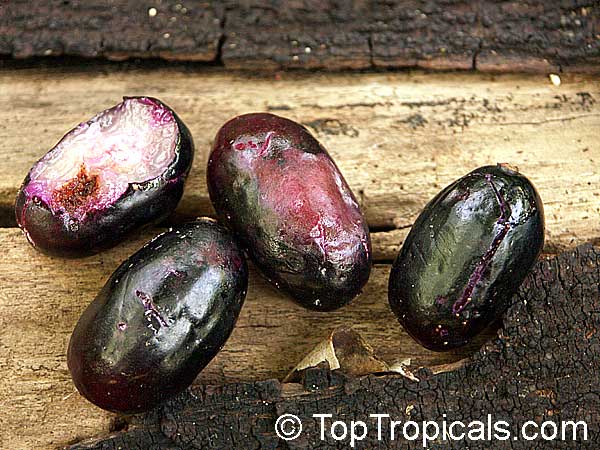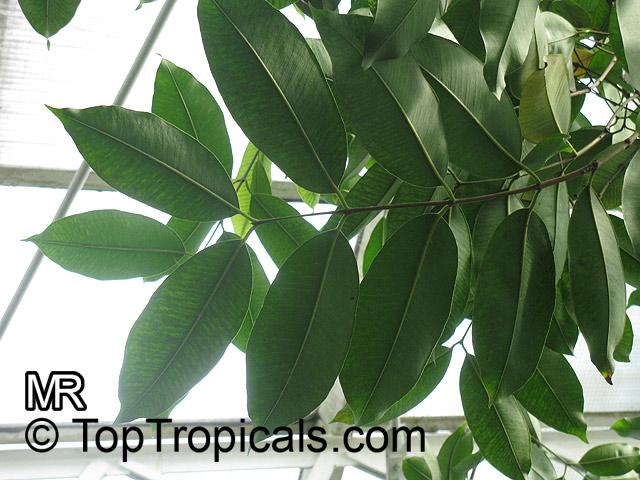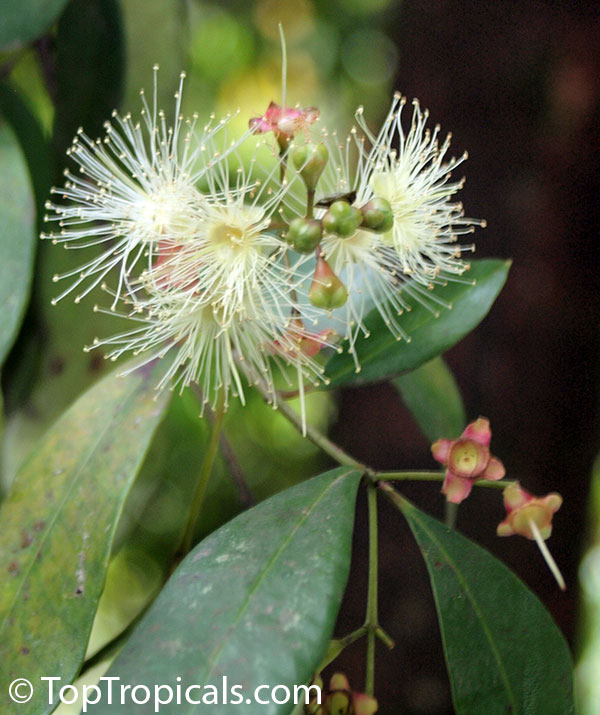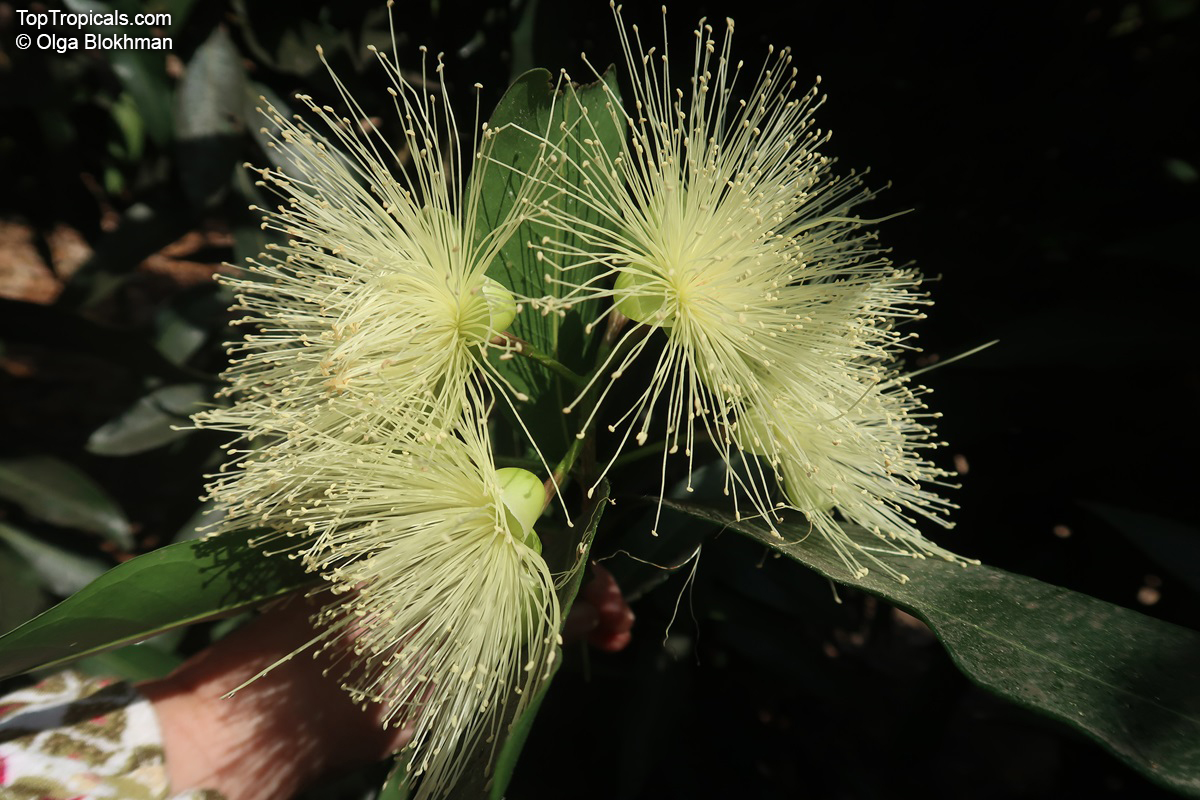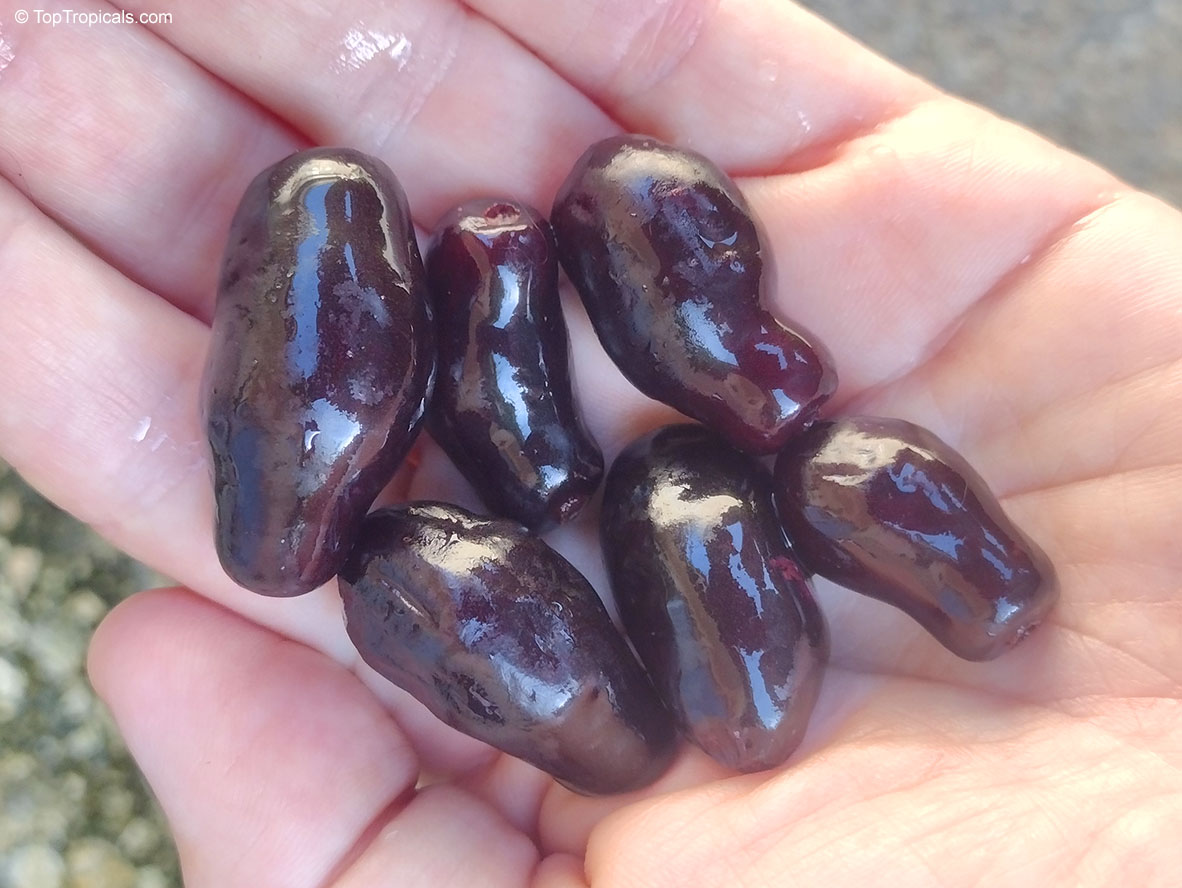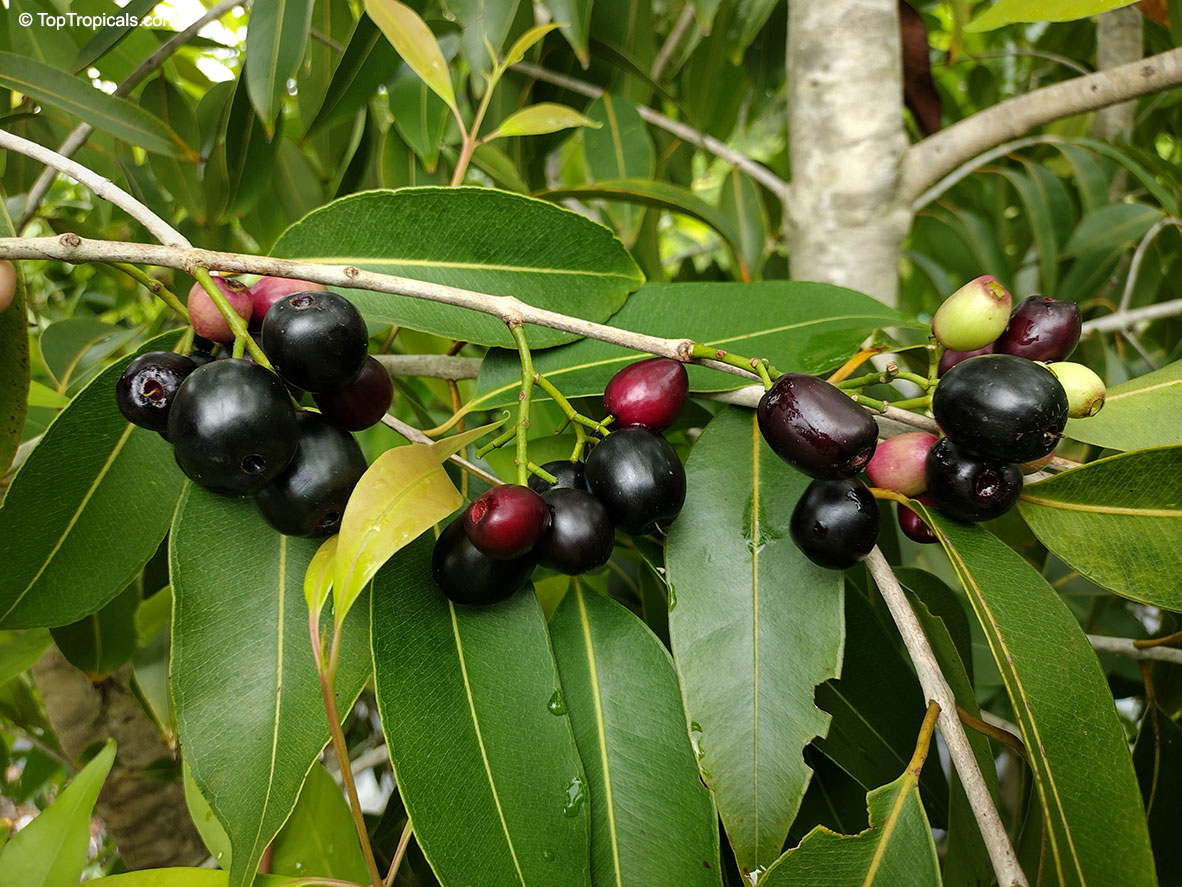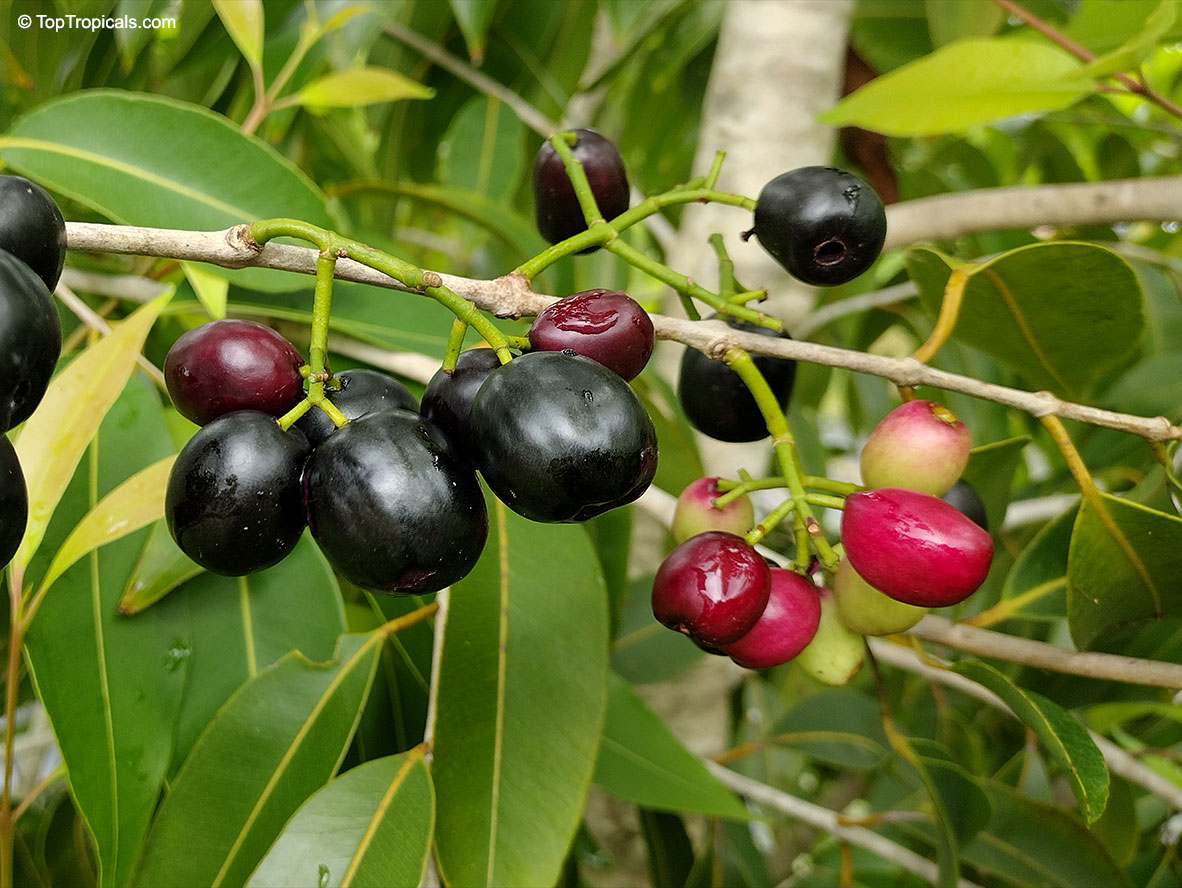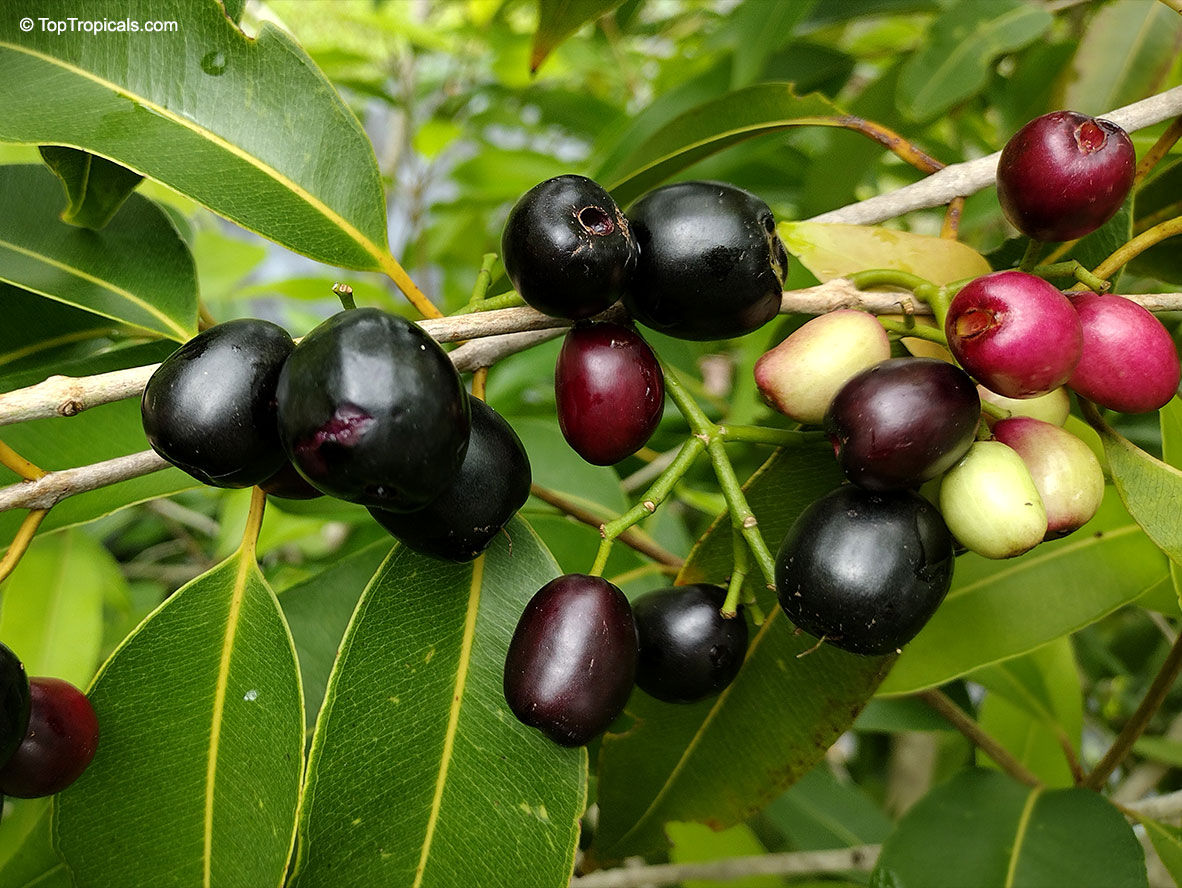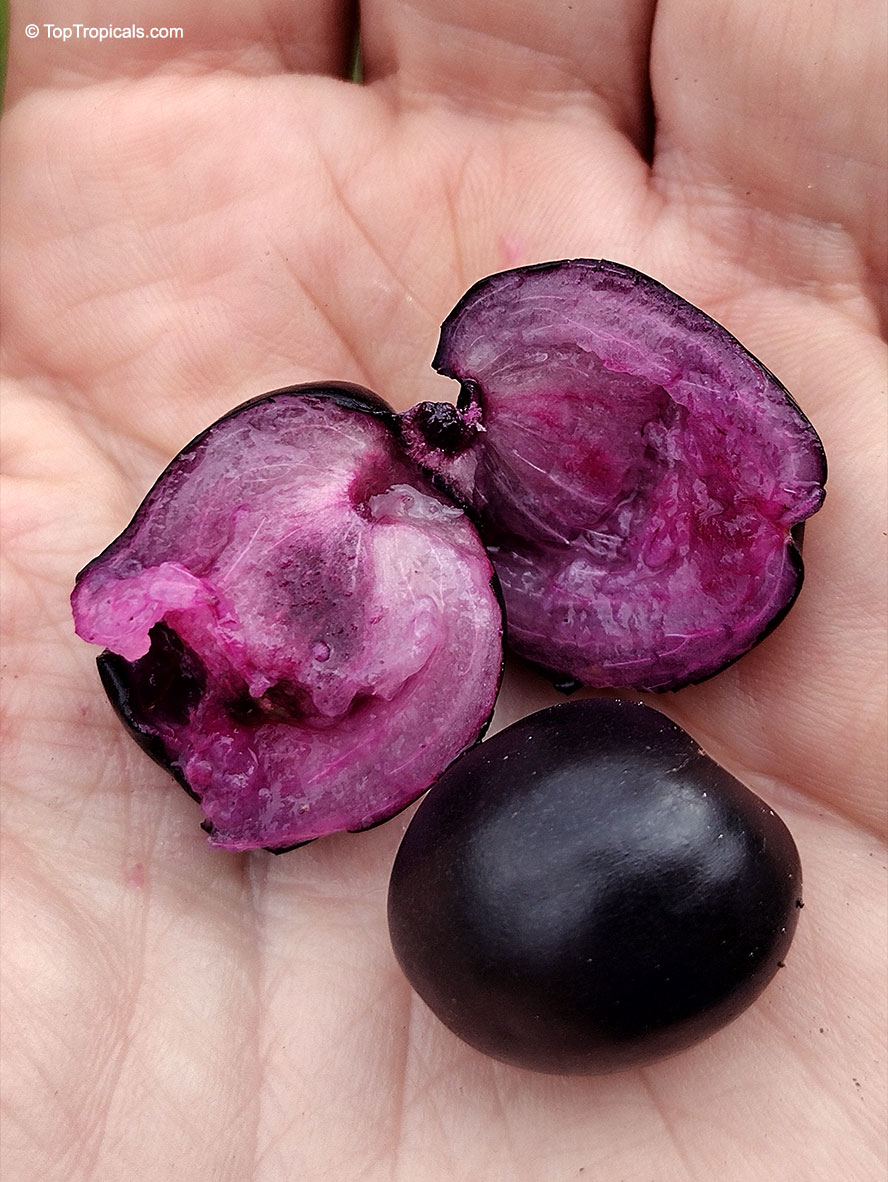Syzygium cumini (Malabar plum)
Top Tropicals Plant Encyclopedia
Botanical name: Syzygium cumini
Common names: Malabar plum, Java plum, Black plum, Jamun, Jaman, Jambul, Jambolan, Lilly Pilly, Duhat
Family: Myrtaceae
Origin: Southern Asia, Australia
Hardiness: 20°F







Java plum, is a flowering evergreen and tropical tree native in India, Burma, Ceylon, Pakistan, Philippines, and Indonesia. It has been introduced in Cook Islands, Fiji, French Polynesia, Guam, Hawai i, Florida, New Caledonia, Niue, Palau, Tonga, China, Indonesia, Malaysia, Christmas Island, Australia, Africa, India, Caribbean, and South America. It was introduced to Florida in the 1920s.
It produces dark purple to black fruit with off-white flesh that can be used for jam, vinegar, etc but can be astringent if not fully ripe. Fruit matures in 90 days. Fruits are highly perishable. Fruits change their color from green to deep red or bluish black. This is a non climacteric fruit hence it dees not ripen after harvesting. Fully ripe fruits are harvested daily by hand picking or by shaking the branches and collecting the fruits on a polythene sheet. Needs a number of pickings, since all fruits do not ripen at a time. In India, the fruits are harvested by hand as they ripen and this requires several pickings over the season. Indian horticulturists have reported a crop of 700 fruits from a 5-year-old tree. The production of a large tree may be overwhelming to the average homeowner.
The jambolan tree is of real value in apiculture. The flowers have abundant nectar and are visited by bees (Apis dorsata) throughout the day, furnishing most of the honey in the Western Ghats.
The essential oil distilled from the leaves is used to scent soap and is blended with other materials in making inexpensive perfume.
Jambolan bark yields durable brown dyes of various shades depending on the mordant and the strength of the extract. The bark contains 8 to 19% tannin and is much used in tanning leather and preserving fishing nets.
The wood is water resistant. Because of this it is used in railway sleepers and to install motors in wells. It is sometimes used to make cheap furniture and village dwellings though it is relatively hard to work on.
This tree reaches 30ft and more in height in its natural habitat. It naturally occurs in loams, clays and sandy areas.
Similar plants: Syzygium cumini (Malabar plum)
- Syzygium antisepticum (Kalaum)
- Syzygium aqueum (Water Cherry)
- Syzygium aromaticum (Clove)
- Syzygium australe (Scrub Cherry)
- Syzygium campanulatum (Wild Cinnamon)
- Syzygium contractum (Bois de Pomme)
- Syzygium jambos (Rose apple)
- Syzygium luehmannii (Small Leaved Lilly Pilly)
- Syzygium malaccense (Malay Apple)
- Syzygium myrtifolium (Wild Cinnamon)
The tree is very vigorous, bushy and full, and can be also used as a fast growing ornamental, creating a dense privacy screen in just a couple of seasons.
Recommended Fertilizer: SUNSHINE C-Cibus - Crop Nutrition Booster
SUNSHINE-Honey - sugar booster
